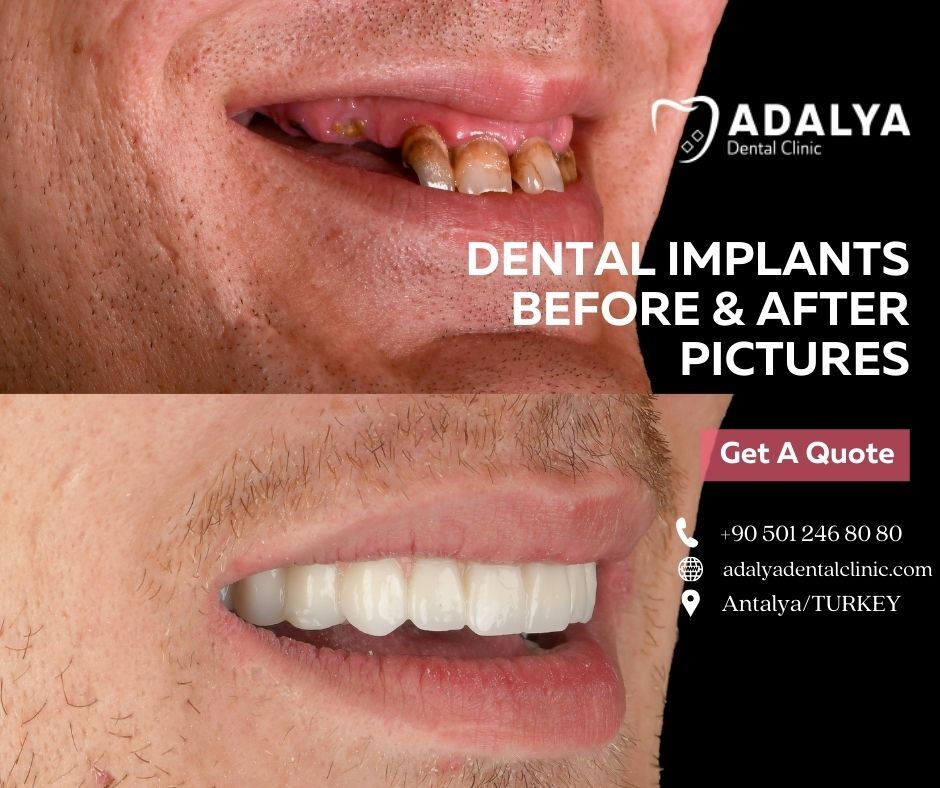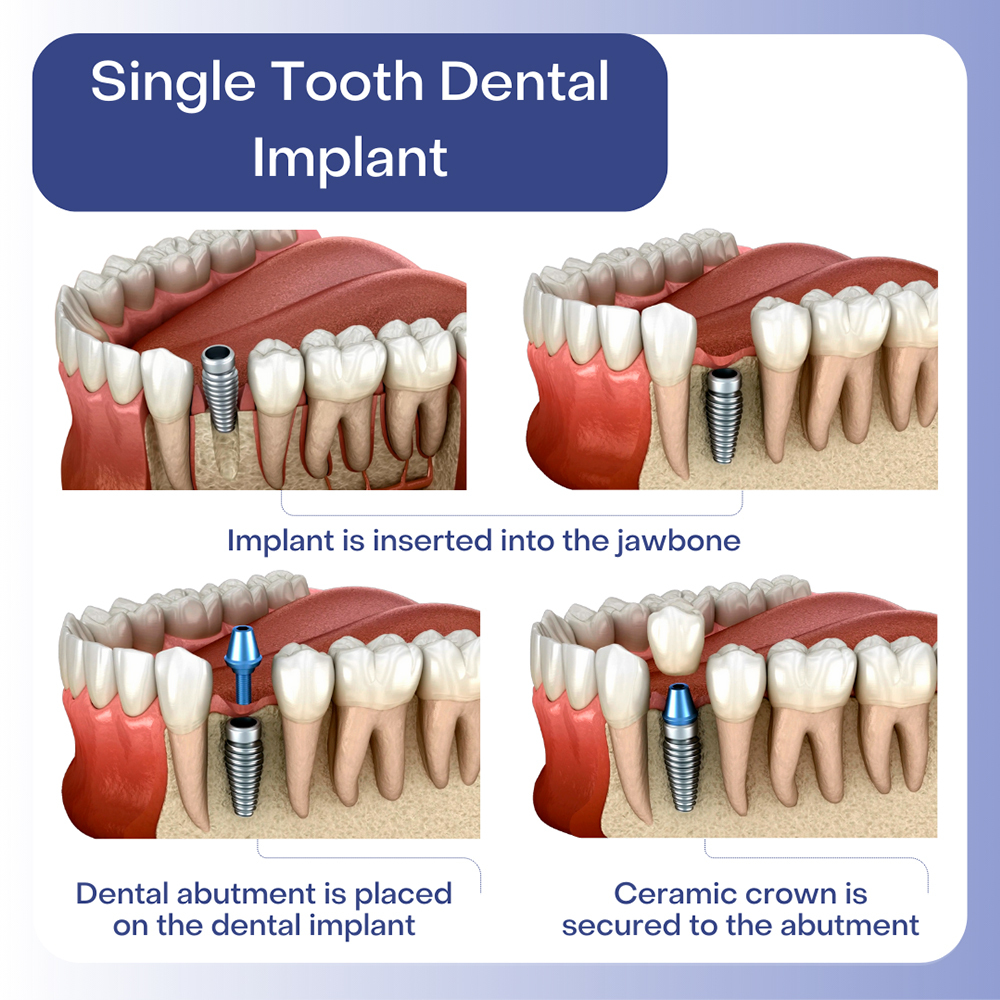A Biased View of Dental Sense
The Greatest Guide To Dental Sense
Table of ContentsThe Best Strategy To Use For Dental Sense10 Simple Techniques For Dental SenseSome Known Factual Statements About Dental Sense Dental Sense Things To Know Before You Buy
are clinical tools surgically dental implanted right into the jaw to restore an individual's capacity to eat or their look. They give support for synthetic (phony) teeth, such as crowns, bridges, or dentures. When a tooth is lost because of injury or condition, a person can experience complications such as rapid bone loss, defective speech, or modifications to chewing patterns that result in discomfort.Oral implant systems include an oral implant body and oral implant joint and may likewise consist of a joint addiction screw. Kids dental. The dental implant body is surgically put in the jawbone in area of the tooth's root. The dental implant joint is usually affixed to the implant body by the joint fixation screw and extends with gums right into the mouth to support the attached synthetic teeth
(https://sitereport.netcraft.com/?url=https://nearme.vip)Structure of The Dental Implant System picking oral implants, talk to your oral provider about the prospective advantages and dangers, and whether you are a candidate for the procedure. Points to consider: Your total health and wellness is a vital element in figuring out whether you are a good candidate for oral implants, just how long it will take to recover, and how much time the dental implant may stay in location.
Smoking may influence the healing process and reduce the lasting success of the dental implant. The healing procedure for the dental implant body might take numerous months or longer, throughout which time you normally have a temporary joint in place of the tooth. the dental implant treatment: Very carefully comply with the oral health instructions provided to you by your oral service provider.
The 4-Minute Rule for Dental Sense
Implant failing can cause the requirement for one more surgical treatment to deal with or replace the dental implant system. Recovers the capacity to chew Recovers cosmetic appearance Aids maintain the jawbone from shrinking as a result of bone loss Protects the health and wellness of the surrounding bone and gum tissues Helps keep surrounding (nearby) teeth secure Improves lifestyle Damage to surrounding natural teeth throughout dental implant placement Injury to the surrounding tissues throughout surgical treatment, such as sinus perforation Injury during surgery (as an example, fracture of bordering jawbone) Poor feature, such as seeming like the teeth do not attack together normally A sensation that the tooth is loose or twisting in location arising from an abutment screw loosening up Implant body failing (looseness of the implant body) due to systemic infection, which may be a lot more likely in people with uncontrolled diabetes mellitus because of local infection in bone and periodontals sustaining the implant body due to postponed healing, which may be most likely in patients who smoke Difficulty cleaning up the gums around the dental implant, leading to bad oral hygiene Unattended periodontal disease Post-surgical feeling numb because of nerve impingement or damage Constantly inform health and wellness care companies and imaging technicians that you have dental implants prior to any kind of magnetic vibration imaging (MRI) or x-ray procedures.
FDA is not knowledgeable about any adverse events reported for MRI or x-ray treatments with dental implants. Dental implants systems are typically made from products that adhere to worldwide agreement requirements of the International Organization for Standardization (ISO) or ASTM International. These standards have information of what makes a safe product.

A dental implant is a framework that replaces a missing tooth. With screw-like gadgets, the surgeon inserts a dental implant into the jawbone, and it acts as a support for a fabricated tooth, called a crown.
5 Simple Techniques For Dental Sense
Some people are not qualified for oral implant surgical treatment. It is for dental doctors to run on individuals with: severe illnessuncontrollable metabolic diseasebone or soft tissue illness or infectionIf these problems are settled, a person can have the surgery. In, oral doctors abstain from running on individuals with: If people with any one of the above undertake dental implant surgical procedure, there is a higher threat of the dental implant failing.

Dental implant surgical treatment is an individualized process. It's not the very same for every person. The complying with gives a basic introduction of what you can expect your dental practitioner, dental surgeon, periodontist or prosthodontist to do: Position the implant surgically. Give you time to heal. Affix the blog post and last crown, bridge or denture.
Next, your surgeon will thoroughly place the dental implant into your jaw. If your dental implant is near the front of your mouth, your dental expert will make a temporary tooth for you to use till you heal.
Dental Sense Things To Know Before You Get This
Your supplier can tell you what to expect in your situation. Throughout the healing stage, your jawbone needs to fuse to the oral implant. This process, called osseointegration, is crucial for security and lasting success. This process can take anywhere from three to 9 months. In some instances, it might take much longer.
As soon as your implant heals, your dentist can connect the abutment (small connector blog post) and your final reconstruction (crown, bridge or denture). This generally takes concerning one hour to complete and may need a 2nd minor surgery. You should not feel any pain during your dental implant procedure due to the fact that your supplier will certainly use medication to numb your periodontals.